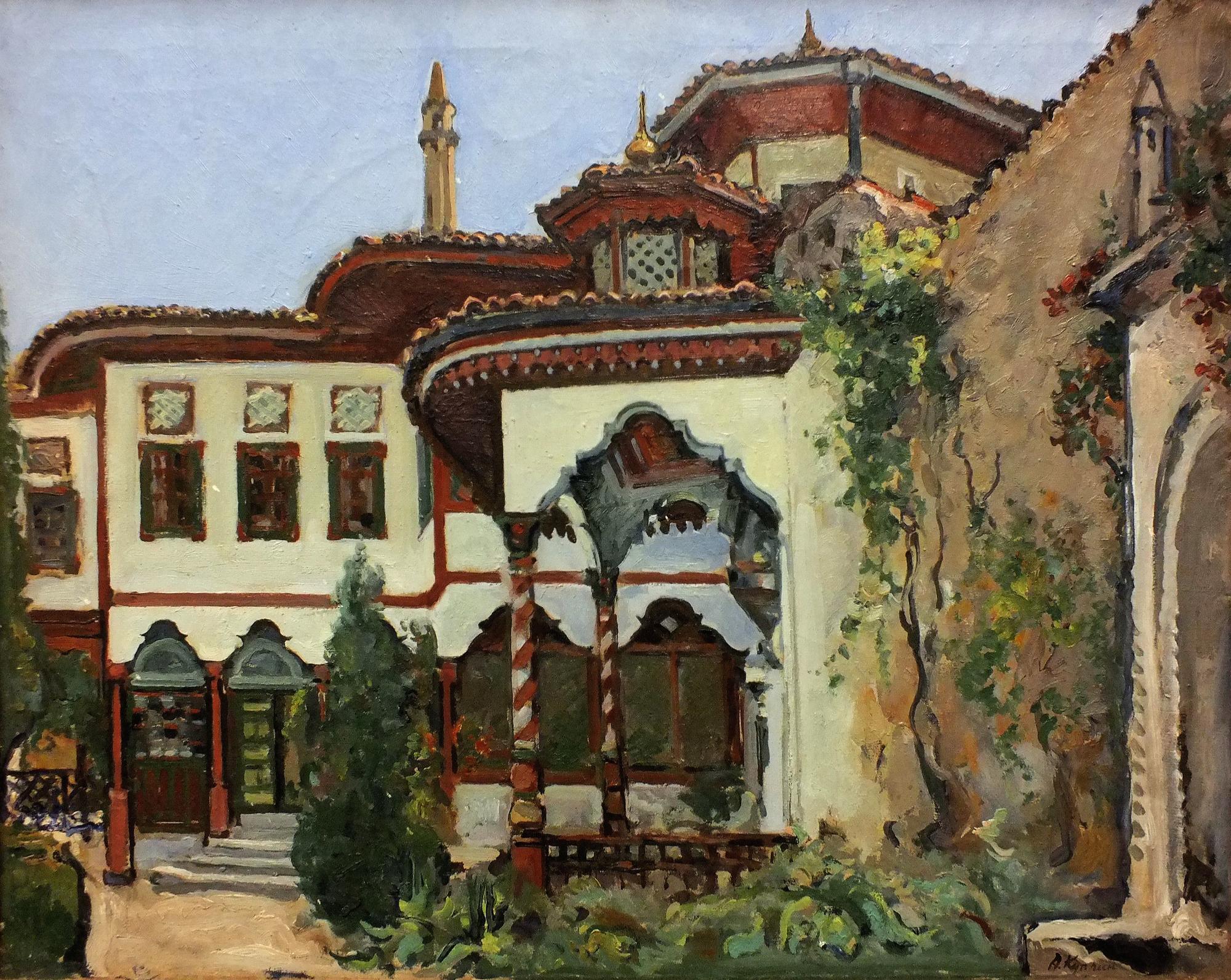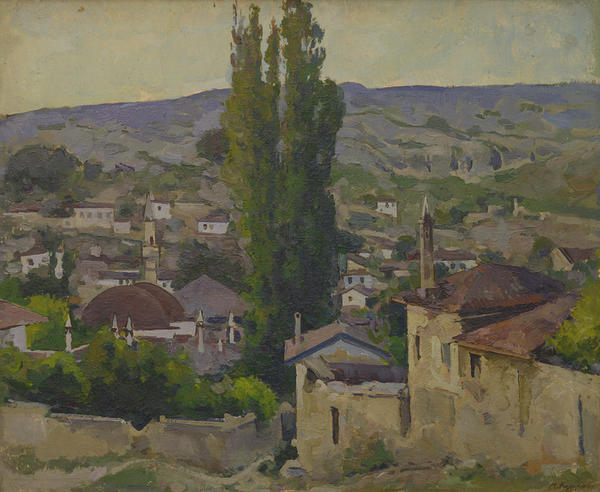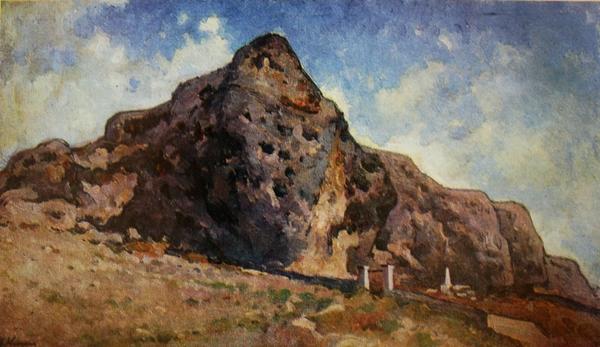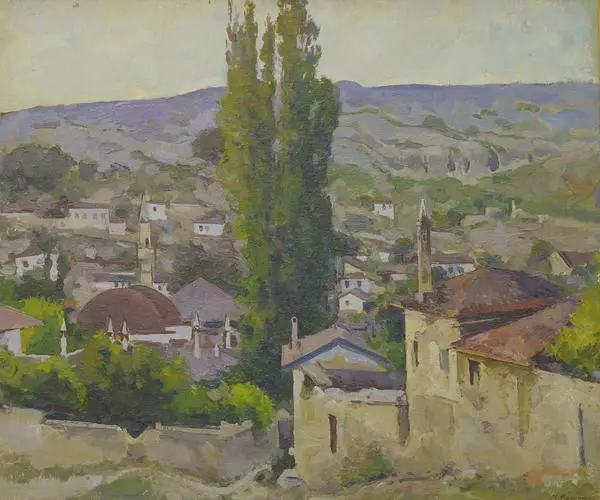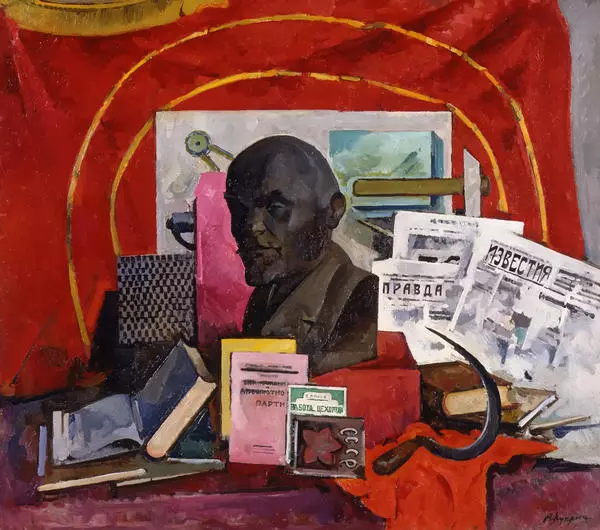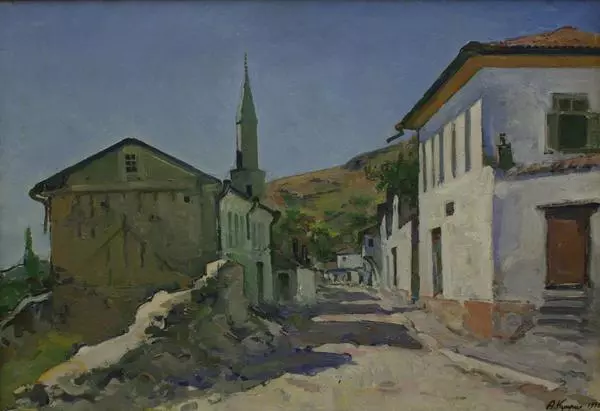The artist first came to the Crimea in 1907, when doctors sent him to a warm, mild climate to be treated for tuberculosis. He lived there for almost a year. In the country house where he had settled, there was a great view of Yalta, Mount I-Petri and the bay. Those views were transferred by Kuprin onto his canvases. In fact, since that moment the Crimea becomes a recurrent theme of his artwork for the rest his life.
His young years were influenced by Avant-garde trends in painting. He was fond of Claude Monet, Paul Cézanne, Vincent Van Gogh, Paul Gauguin, Henri Matisse and other famous European artists. He was a member of the ‘Jack of Diamonds’ group, who advocated rebellious ideas in art. In those years, he gave preference to still lifes, where depicted primarily artificial, unchanging items – sculptures, interior items, even horse skulls.
Classic landscape with views of nature prevailed in Kuprin’s work in the 1920s. Then he painted a lot of Moscow and Central Russian nature, views of the eastern and central Crimea.
The Bakhchysaray cycle was created in the late 1920s. The artist came to this city every year from 1926 to 1930, and later returned here from time to time. In a series of works made in Bakhchisaray, the artist depicted the main attraction of the city – the Khan’s Palace, once the residence of Crimean khans.
By the time the cycle was completed, Kuprin already had experience in working with architectural landscape. When in the mid-1910s he became interested in the urban theme, he drew a lot of factories (Factory near Moscow, Factory landscape near Moscow). In these paintings the artist built clear geometric volumes of buildings, from which the rhythmic cylinders of pipes ‘grew’. The industrial landscape captures the artist’s attention again in the 1930s. It is no coincidence that he went on a trip to Azerbaijan and Georgia for oil fields at that time. However, Gurzuf and Bakhchisaray did not disappear from his life and still remained his favorite places, where the artist constantly drew topics for new paintings.
The works of the artist show many different places of the Crimean peninsula. After the Great Patriotic War, he created a series of works dedicated to Feodosiya, The surviving houses, Feodosiya. Noon, Feodosia. Quarantine Cove were among them.
In the 1950s, when the artist was over seventy, he continued to paint. He painted mainly in his country house in Peski near Moscow and in the beloved Crimea.
His young years were influenced by Avant-garde trends in painting. He was fond of Claude Monet, Paul Cézanne, Vincent Van Gogh, Paul Gauguin, Henri Matisse and other famous European artists. He was a member of the ‘Jack of Diamonds’ group, who advocated rebellious ideas in art. In those years, he gave preference to still lifes, where depicted primarily artificial, unchanging items – sculptures, interior items, even horse skulls.
Classic landscape with views of nature prevailed in Kuprin’s work in the 1920s. Then he painted a lot of Moscow and Central Russian nature, views of the eastern and central Crimea.
The Bakhchysaray cycle was created in the late 1920s. The artist came to this city every year from 1926 to 1930, and later returned here from time to time. In a series of works made in Bakhchisaray, the artist depicted the main attraction of the city – the Khan’s Palace, once the residence of Crimean khans.
By the time the cycle was completed, Kuprin already had experience in working with architectural landscape. When in the mid-1910s he became interested in the urban theme, he drew a lot of factories (Factory near Moscow, Factory landscape near Moscow). In these paintings the artist built clear geometric volumes of buildings, from which the rhythmic cylinders of pipes ‘grew’. The industrial landscape captures the artist’s attention again in the 1930s. It is no coincidence that he went on a trip to Azerbaijan and Georgia for oil fields at that time. However, Gurzuf and Bakhchisaray did not disappear from his life and still remained his favorite places, where the artist constantly drew topics for new paintings.
The works of the artist show many different places of the Crimean peninsula. After the Great Patriotic War, he created a series of works dedicated to Feodosiya, The surviving houses, Feodosiya. Noon, Feodosia. Quarantine Cove were among them.
In the 1950s, when the artist was over seventy, he continued to paint. He painted mainly in his country house in Peski near Moscow and in the beloved Crimea.
